7 New Social Media Platforms Reshaping eDiscovery in 2022
The mass virtualization of the workforce and social distancing because of the pandemic undeniably made Social media the king (or queen) of human interaction over the last 3 years.
Despite the broad return to IRL over the last year, the volume, variety, and velocity of social media engagement (and creation of digital evidence) is not decreasing! In fact, over the last 18 months a whole host of new players have emerged and gained massive user adoption.
For investigators and litigators alike, this is a blessing and a curse. The new platforms potentially contain a wealth of informal and likely relevant electronically stored information (ESI). But, knowing where to look, how to preserve and even how to review this data can be a massive challenge.
This blog highlights some of the new players on the social media stage set to reshape the digital Dataverse in the coming years. As well as some old social media dogs that have learned new tricks and offer new means of interacting and creating a digital footprint.
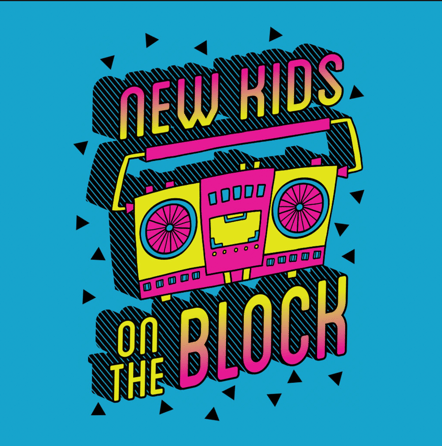
New Kids on the Block
Emerging data types continue to dramatically impact the identification, preservation, and analysis of digital evidence in 2022. There is a shift away from mainly communicating via the big social media platforms like Facebook, Instagram, Twitter, and YouTube. And a surge of new, increasingly visual, and short format communication platforms that especially younger users and business users are flocking to.
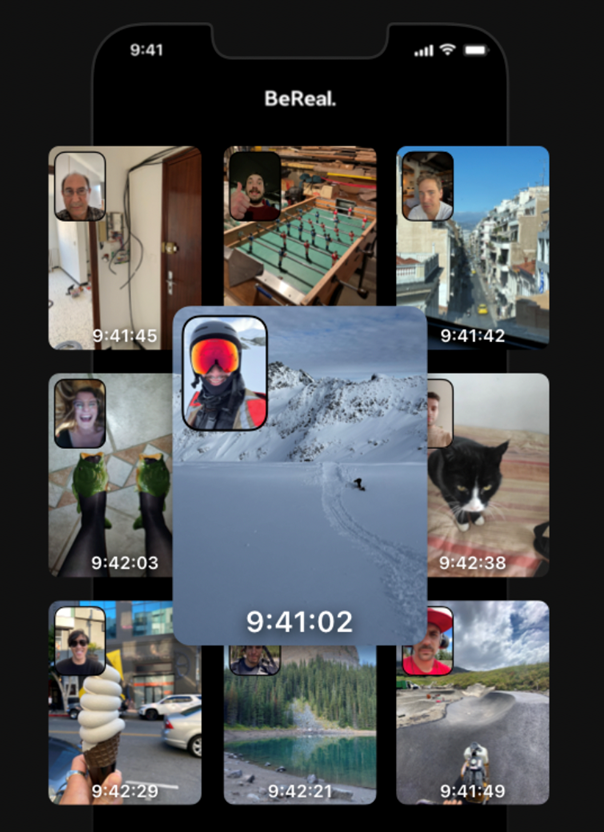
BeReal
This platform is part of an increasing Gen Z abandonment of the curated perfection of “Instagram reality.” A French Social Media App founded in 2020, BeReal’s entire premise is that it is a way to connect with your friends “for real.” According to the app’s website “every day at a different time, everyone is notified simultaneously to capture and share a Photo in 2 Minutes.
BeReal encourages people to "show your friends who you really are, for once," by removing filters and opportunities to stage, over-think, or edit photos. Unlike ephemeral social media platforms like Snapchat, BeReal allows users to save memories over time. Also, unlike other platforms, the app takes a picture using both your front and back camera, so other people can see what you look like and where you are.
As with other Social media platforms you can add captions to your post. But unlike other platforms you cannot immediately delete an unflattering or compromising post immediately, According to the BeReal website, you can only delete your post once a day after you've posted it on your feed.
Currently valued at $587 million, the app has been downloaded over 53 Million times as of October 2022. While not a billion user behemoth like the big four Social Media platforms yet, the app currently has over 10 Million daily active users which rivals Slack and saw a shocking 29200% percent growth in 2020.
The potential concerns about data privacy, the real-time and un-staged nature of the content and the rapid growth all make BeReal an app for legal teams keep an eye on into 2023 and beyond.
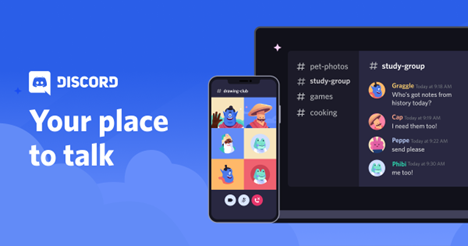
Discord
As with so many Social Networking applications before, Discord is a zebra who has most certainly changed its stripes. Originally squarely an app aimed at video gamers at the time of its 2015 founding, the App connects people via text chat, voice chat, video chat, and even by sharing links, videos, and other content. The recent change of leadership at Twitter has pushed many legacy social media users to embrace Discord as an alternative means of connecting.
Discord breaks up communities into “servers”. Each server is dedicated to a specific topic like your favorite YouTuber, game, topic, or industry. Each server is further broken down into categories and channels like Slack. As of midyear, Discord had 150 million users and 19 million active servers per week.
The variety of means of interacting and creating ESI on Discord, like collaboration tools, makes effectively collecting and parsing Discord for eDiscovery document review challenging. From links and shared files to video chats, text chats and more, the variety of data types is a complex one to navigate.
As Discord continues to be a prime alternative people turn to after the change of leadership at Twitter, users and the needs to collect and preserve tis channel-based data is only likely to increase.
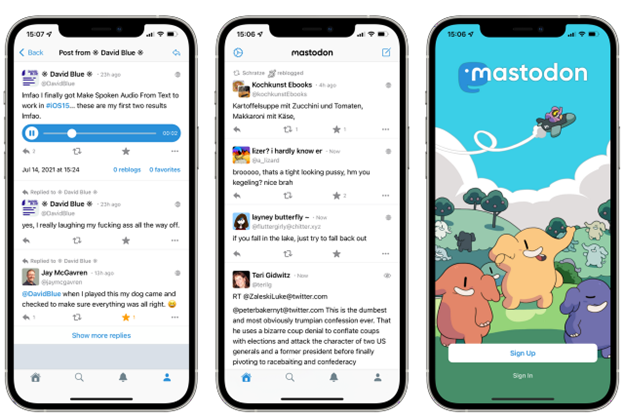
Mastodon
Before October I had never heard of Mastodon, but this decentralized real-time short format communication platforms are now the heir apparent for anyone looking to leave twitter. Like Discord, this social media platform is organized around various interest-based servers known as “instances.”
With “Toots” in lieu of Tweets and “Boosts” in lieu of Re-tweets, the platforms function a bit like an open-sourced Twitter Discord Hybrid. Absent a “blue check” verification, authentication of Mastodon content may pose legal hurdles in the future. While still just a drop in the bucket at 1 Million monthly active users, the platforms saw a surge of 6,000%+ in just the two weeks following the change of twitter leadership.
For Electronic discovery and legal teams, this new ESI source is one to watch. The decentralized nature of the servers and authentication challenges may pose challenges in the eDiscovery process down the line as more potentially relevant data is created on Mastodon.
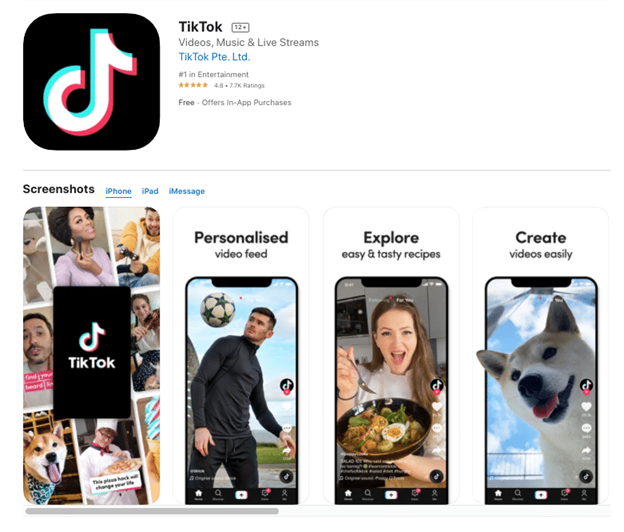
TikTok
While not exactly a new kid on the block, TikTok has gone mainstream in a major way in 2022. TikTok went mainstream in 2022 with big brands dumping millions and celebrities like the Kardashian jumping in with both feet. There was even a proliferation of the short format videos on more business centric platforms like LinkedIn, the App saw a shift to the main stage in 2022.
Simply put, TikTok is rife with short videos that may potentially contain relevant ESI that may need to be subject to a legal hold in a matter.
TikTok is now available in over 150 countries, has over 1 billion users, and has been downloaded over 210 million times in the United States alone. And the most striking thing in 2022 is the aging up of the user base away from mainly teens to business professionals and mainstream brands. With a user base now larger than Twitter and Snapchat combines, this App is increasingly one to keep an eye on when scoping for eDiscovery preservation and collection.
Big industry and investment in TikTok means big potential for litigation, and to date there have already been murder cases, IP matters and complex litigation involving TikTok ESI. Understanding how to Identify, search, preserve and ultimately conduct an effective document review on this new video heavy social media platform will only increase in the coming years. Legal practitioners and service providers alike ought to ensure their partners equip them with the computer vision and Artificial Intelligence enabled tech necessary to effectively review it.

Metaverse
AI and Machine learning coupled with increasingly believable Virtual reality and augmented reality environments are used in the Metaverse to create an experience that blurs the line between the real and digital worlds like never before possible. The blockchain and various cryptocurrencies are now being integrated into the Metaverse to allow for various savvy companies or individuals to monetize avatar customization and other mechanisms for optimizing and localizing your piece of Virtual Reality.
While adoption of this new tech has not yet been widespread, big industry is investing billions of dollars into the tech and some predict the overall value of the Metaverse will extend into the trillions.
Legal teams have a wealth of things to consider when thinking of ESI generated by the Metaverse. From whom has “possession custody and control” of the data to whether regulations like GDPR can even apply in a virtual universe, to things as simple as whether real-world rights extend to an avatar, much remains to be decided.
As with the internet before, the silliness of the earliest iterations of the Metaverse and Web3.0 do not preclude the underlying tech and methods of connecting from dramatically impacting daily life and the digital fingerprints we leave behind.
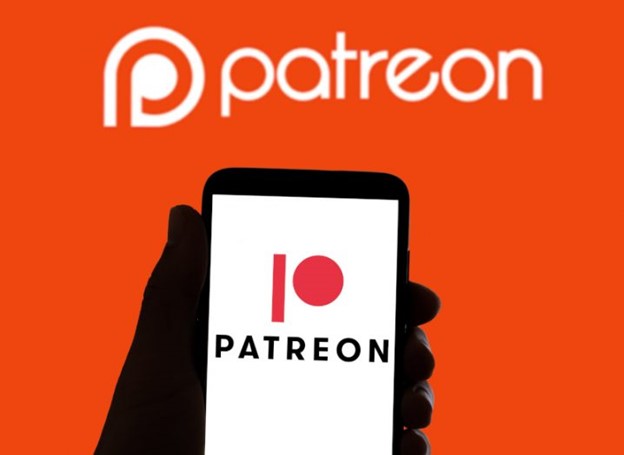
Patreon
Patreon, much like Mastodon and Discord, is not a New Kid on the Social Media block per se... but it has seen a recent surge because of behavior changes made by larger legacy players. An alternative to more heavily moderated platforms Like YouTube and Spotify, Patreon is an audio and video sharing platform of over 250,000 creators and boasting over 8 Million monthly active users.
Unlike YouTube, this app relies on users paying subscription fees in lieu of advertising dollars and has paid out more than 3.5 Billion dollars to creators.
As with YouTube, the video-based content may be a source of evidence in a matter. AI advancements like Computer vision powered image and video identification and search can help greatly in parsing Patreon’s video ESI.
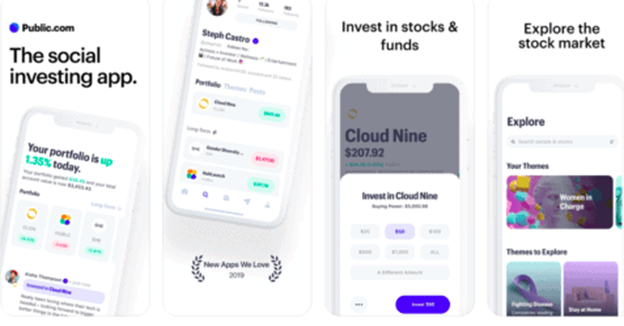
Public
Public is hybrid fractional investing app and social network for users interested in finance, cryptocurrency, and investing. Users can directly manage portfolios in App as well as directly exchange messages or join public discussion channels. Public lets you invest in fractional assets, from stocks and ETFs to fine art, collectibles, and crypto. It’s also a great option for new investors looking for community insights and educational resources to help them invest.
The app also recently added Public Live, a real time chat platform like Clubhouse. Although unlike Twitter Live and Clubhouse, this chat function is more closely managed with vetted experts and regularly scheduled broadcasts.
Given the recent high profile EFX debacle, Robinhood lawsuits and crypto crash and myriad of lawsuits in the pipeline relating to crypto, this data source may be especially useful for case teams dealing with financial or crypto organizations and large shareholder classes. At just over a million users and growing it is likely only these niche matters that would really need to look at public.

Old Dogs, New Tricks
In response to the explosion of new platforms with rapid user base growth, any older social networking platforms have recently added functionality that mirrors some of the upstart social platforms given them a run for their money.
- Twitter Spaces - Twitter’s version of Clubhouse, offering live audio conversations. Anyone can join, listen, and speak in a Space on Twitter for iOS and Android.
- Instagram Reels -Instagram’s response to TikTok and SnapChat. Users can record and edit 15-second multi-clip videos with audio, effects, and new creative tools.
- Spotify Live (f/k/a/ Greenroom) - Spotify’s answer to Clubhouse. Users can ask questions, chat with other listeners, and create their own live rooms.
- YouTube Shorts - YouTube’s answer to TikTok. YouTube Shorts is a short-form video-sharing that limits pieces to 60 seconds in length. Since its launch, YouTube Shorts has accumulated over 5 trillion views.
- WhatsApp Business - Business focused tool designed to send WhatsApp direct text messages for marketing purposes, sales and support direct outreach to customers like salesforce or HubSpot.
- Reddit Talk - Reddit’s answer to Clubhouse. About 1000 of the Reddit communities, known as subreddits, have added this function that allows users to host or participate in Live audio talks in your favorite communities.

What’s a legal team to do?
Some of these new social networking platforms will test the limits of your workflows and eDiscovery platforms. Thankfully new technologies, like Reveal 11 and our forthcoming Streams visualization are designed to support the increasingly visual, short format and continual nature of these applications. To stay prepared for the rapidly evolving dataverse Legal professionals should take the following steps:
- Ensure that you include these emerging data types in your eDiscovery scoping efforts.
- Add open-ended questions about methods of Social networking and communication.
- Do not solely rely on IT when scoping for eDiscovery, ask the custodians and actual business unit whether they use any data formats or social media platforms during business, there is quite a bit of shadow IT today.
- Review and revise a social media Information Governance policy annually.
- Ask your service provider or eDiscovery Software provider to run a POC or show how the new data type will be displayed in their tool if you have a case involving one of these emerging data sets.
- Law Firms and In-House should also reach out to their consultants and service providers to ask about the new data types before trying to figure it out alone. These partners may have already developed an approach and can help guide you.

